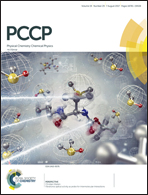The mechanism of nanoparticle-mediated enhanced energy transfer during high-intensity focused ultrasound sonication
Abstract
In this combined experimental and theoretical research, magnetic nano-particle (mNP) mediated energy transfer due to high intensity-focused ultrasound (HIFU) sonication has been evaluated. HIFU sonications have been performed on phantoms containing three different volume percentages (0%, 0.0047%, and 0.047%) of mNPs embedded in a tissue mimicking material (TMM). A theoretical model has been developed to calculate the temperature rise in the phantoms during HIFU sonication. It is observed from theoretical calculation that the phonon layer at the interface of the mNPs and TMM dominates the attenuation for higher (0.047%) concentration. However, for a lower concentration (0.0047%) of mNPs, intrinsic absorption is the dominating mechanism. Attenuation due to the viscous drag becomes the dominating mechanism for larger size mNPs (>1000 nm). At a higher concentration (0.047%), it is observed from theoretical calculations that the temperature rise is 25% less for gold nano-particles (gNPs) when compared to mNPs. However, at lower concentrations (0.0047% and 0.002%), the difference in temperature rise for the mNPs and gNPs is less than 2%.



 Please wait while we load your content...
Please wait while we load your content...